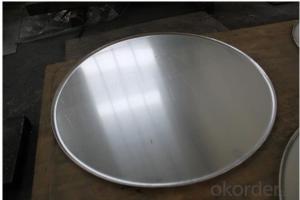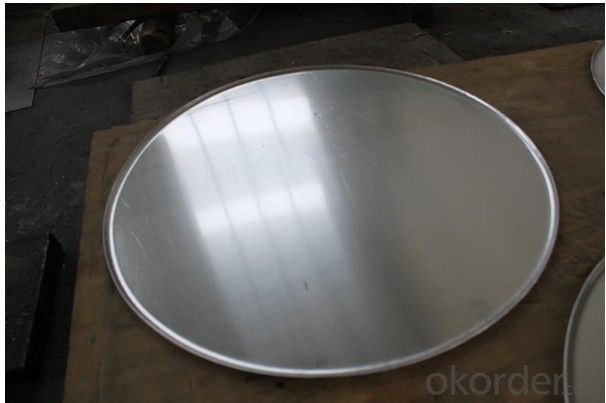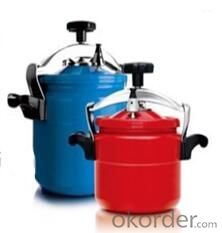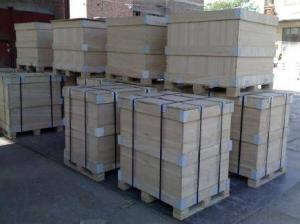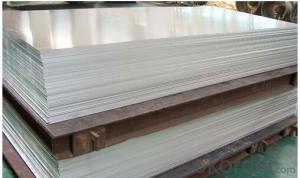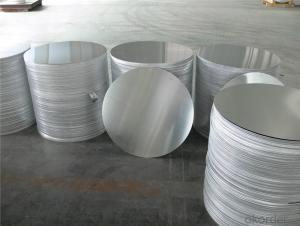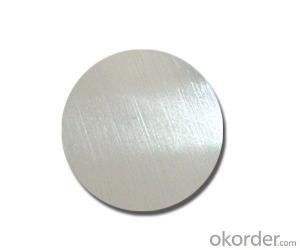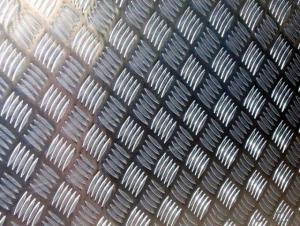4 X 8 Powder Coated Smooth Surface 8011 Aluminum Circle Sheet
- Loading Port:
- Tianjin
- Payment Terms:
- TT OR LC
- Min Order Qty:
- 5 m.t.
- Supply Capability:
- 600 m.t./month
OKorder Service Pledge
OKorder Financial Service
You Might Also Like
Specification
Smooth Surface 8011 Aluminum Circle Sheet
Professional aluminum product manufacturer
We have our own plant , Laboratory and engineer
Over 100 models can totaly satisfy your request
As powerful and stronger factory, our aluminum quality is very stable and reliable
2 years warranty period
Specifications:
Thickness:0.5mm-6.0mm
Width:100mm-900mm
Surface:Bright & smooth surface, not defects like white rust, oil patch.
Product Information :
Product | Aluminum Circle |
Alloy | 1050 1060 1070 1100 1200 |
Temper | O, H12, H14, H18 and H24... |
Thickness | 0.5mm-6.0mm |
Diameter | 100mm-900mm |
Lead Time | Within 30-45 days after receiving deposit |
Packing | Standard Exporting wooden pallets or based on customer requirement |
Material | Using high-tech machinery utilizing premium grade Aluminium Coil. Customized according to the needs and demands of the clients these can be availed at different technical specifications. |
Surface: | Bright & smooth surface, free from defects like white rust, oil patch, edge damage. |
Application | Aluminium Circles are used in Reflective Sign Boards, Road Furniture, Utensils, Sand witch Bottom, Cooker, Non-Stick etc. |
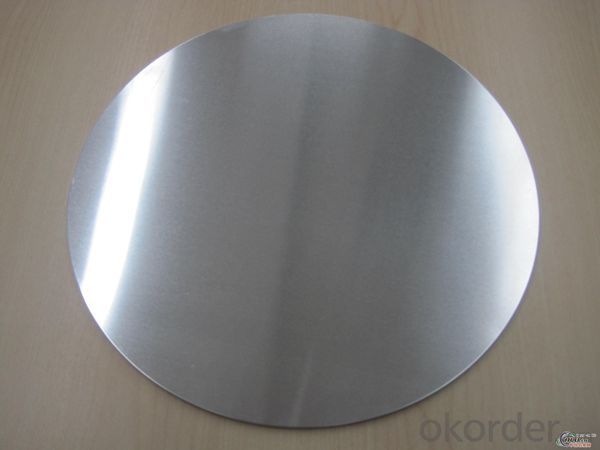
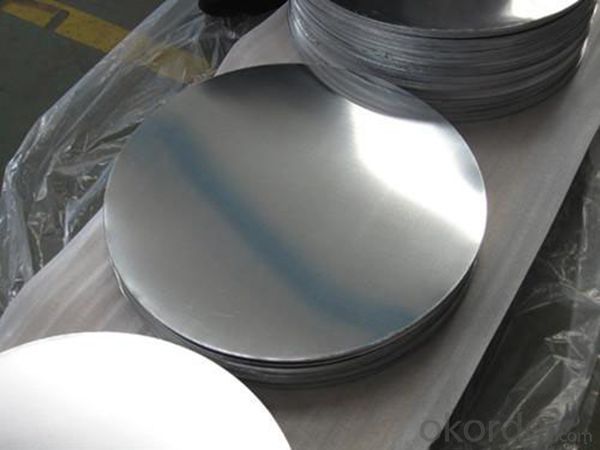
- Q: Which explains aluminum's resistance to corrosion? Any aluminum oxide that forms readily falls off the metal and exposes the corrosion-resistant metal. The aluminum oxide that forms adheres to the metal surface. The reduction half-reaction Al3+(aq) + 3e- ---gt; Al(s) occurs readily. The standard reduction potential for the Al3+/Al half-reaction is above the standard reduction potential for the O2/H2O half-reaction.
- i would start by plugging in some of those key terms into wikipedia. it often has shockingly good engineering physics articles. there are really only 4 variables: exhaust tube, annealing furnace, age hardened aluminum alloy. play with those, and you might find terms that lead you to your answer
- Q: Remember the notorious Chevy Vega of the 1970's? As I recall,one the big problems with that car was that it was equipped with an aluminum block engine. The new Ford Mustangs arealso equipped with aluminum engines to reduce curb weightand improve fuel efficiency. Will they be prone to the sameproblems that the Vega had down the road? Are there othermanufacturers that have used aluminum engines with successrecently?
- The problem with the Vega was not so much that it had an aluminum block, as it was an unsleeved aluminum block, i.e. the pistons ran directly on aluminum bores (actually it was an aluminum/silicon alloy that was injection molded, very advanced technology for the time). Although Mercedes had already done this on some of their cars (with mixed success), it didn't work well in the Vega, the bores would scuff and score, and the engine would burn oil badly, sometimes in only 15,000 miles or so. Rebuilt Vega engines had iron sleeves installed and were very sought after. As long as an engine has iron sleeves in the bores there is no reason it shouldn't last as long as an iron engine. There is actually more to worry about with aluminum cylinder heads, they are generally not as durable as iron ones, though they are almost universal now. The fact is, engine technology has come a long way since the 70's, and most modern engines will reach 200k with good maintenance if they are not abused, aluminum or not.
- Q: How do you prevent warping of aluminum sheets during machining?
- There are several measures that can be taken to prevent warping of aluminum sheets during machining: 1. Proper material selection is crucial in minimizing warping. Opt for aluminum alloys with lower levels of thermal expansion, like 6061 or 7075, as they are less prone to warping. 2. It is recommended to stabilize the material before machining by annealing or stress-relieving the aluminum sheets. This process reduces internal stresses and decreases the likelihood of warping. 3. Ensure the use of appropriate cutting tools. Opt for tools with sharp edges and proper geometry to minimize heat generation and facilitate efficient chip removal. Carbide or diamond-coated tools are often preferred for their high heat resistance when machining aluminum. 4. Minimize heat generation during machining, as excessive heat can cause warping. Implement the use of coolant or lubricants to reduce friction and dissipate heat. Continuous cooling helps maintain a stable temperature and prevents warping. 5. Properly control cutting parameters such as cutting speed, feed rate, and depth of cut to prevent warping. High cutting speeds or excessive material removal rates generate excessive heat, which leads to warping. Experimentation and experience should determine the optimal parameters. 6. Use appropriate fixturing during machining to minimize the chances of warping. Securely clamp the aluminum sheets using suitable fixtures or jigs to maintain stability and prevent movement. 7. Consider employing machining techniques like climb milling or ramping, which reduce vibrations and ensure a smoother cutting process, thereby reducing the risk of warping. 8. After machining, it is advisable to stress-relieve the aluminum sheets again. This step further reduces any residual stress that may have developed during the machining process. By adhering to these steps, the chances of warping during the machining of aluminum sheets can be significantly reduced, resulting in high-quality finished products.
- Q: What is the elongation percentage of 101 aluminum sheets?
- The elongation percentage of 101 aluminum sheets refers to the amount of deformation or stretching the material can undergo before breaking. The exact elongation percentage of 101 aluminum sheets can vary depending on various factors such as the thickness of the sheets and the specific manufacturing process. However, in general, 101 aluminum alloy is known for its excellent formability and high elongation properties. It typically exhibits elongation percentages ranging from 10% to 30%, which means the material can stretch by that percentage of its original length before fracturing.
- Q: Cooks are warned not to use aluminum cookware when preparing acidic foods. Why?
- Plain okorder /... Hope this helps.
- Q: Can aluminum sheets be anodized?
- Aluminum sheets are capable of undergoing anodization, which is an electrochemical procedure responsible for generating a safeguarding oxide layer on the aluminum's surface. This particular layer amplifies the metal's resistance against corrosion, its endurance, and its overall appeal. Anodization is widely utilized in various industries, such as automotive, aerospace, and construction, in order to furnish aluminum sheets with a defensive coating and enhance their visual aesthetics. The process entails submerging the aluminum sheet into an acidic electrolyte solution and subsequently passing an electric current through it. As a result, oxygen ions merge with the aluminum atoms and construct the oxide layer. This layer can be further augmented by incorporating dyes or pigments, resulting in diverse colors and finishes. All in all, anodization proves to be an adaptable and efficient technique for treating aluminum sheets.
- Q: Can the aluminum sheets be used for manufacturing door frames?
- Indeed, door frames can be manufactured using aluminum sheets. Aluminum, a versatile material, finds extensive usage in the construction field owing to its robustness, longevity, and lightweight nature. It can be conveniently molded, curved, and joined through welding processes to fashion door frames of diverse dimensions and styles. Furthermore, aluminum possesses exceptional resistance against corrosion, rendering it suitable for both indoor and outdoor applications. In conclusion, employing aluminum sheets for the production of door frames represents a sensible and widely favored option within the construction sector.
- Q: This question asks about the various surface treatments or finishes that can be applied to custom-made aluminum sheets.
- <p>Custom-made aluminum sheets can be finished in a variety of ways to achieve different aesthetic and functional properties. Some of the common finishes include: Anodizing, which provides a protective oxide layer and can be colored; Powder coating, offering a durable and colorful finish; Mill finish, which is the natural surface of the aluminum after rolling; Brushed or Satin finish, giving a鍝戝厜 texture; Mirror finish, providing a reflective, polished surface; and Painted finish, where the aluminum is coated with a layer of paint for color and protection. Each finish serves different purposes, from enhancing corrosion resistance to improving the visual appeal of the aluminum sheet.</p>
- Q: Can aluminum sheets be bent?
- Yes, aluminum sheets can be bent. Aluminum is a highly malleable metal, which means it can be easily shaped or formed using techniques such as bending, rolling, or folding. The process of bending aluminum sheets involves applying force to the metal in order to create a desired angle or curve. This can be done by using specialized tools such as a brake press or by using manual techniques. The flexibility of aluminum makes it a popular choice for various applications where bending or shaping is required, such as in construction, automotive, or aerospace industries.
- Q: Are aluminum sheets suitable for HVAC applications?
- Yes, aluminum sheets are suitable for HVAC applications. Aluminum is a lightweight, durable, and corrosion-resistant material, making it ideal for use in heating, ventilation, and air conditioning systems. It offers excellent thermal conductivity, allowing for efficient heat transfer, and can be easily formed and fabricated to meet specific requirements in HVAC installations. Additionally, aluminum is also environmentally friendly as it can be recycled, making it a sustainable choice for HVAC applications.
Send your message to us
4 X 8 Powder Coated Smooth Surface 8011 Aluminum Circle Sheet
- Loading Port:
- Tianjin
- Payment Terms:
- TT OR LC
- Min Order Qty:
- 5 m.t.
- Supply Capability:
- 600 m.t./month
OKorder Service Pledge
OKorder Financial Service
Similar products
Hot products
Hot Searches
Related keywords
